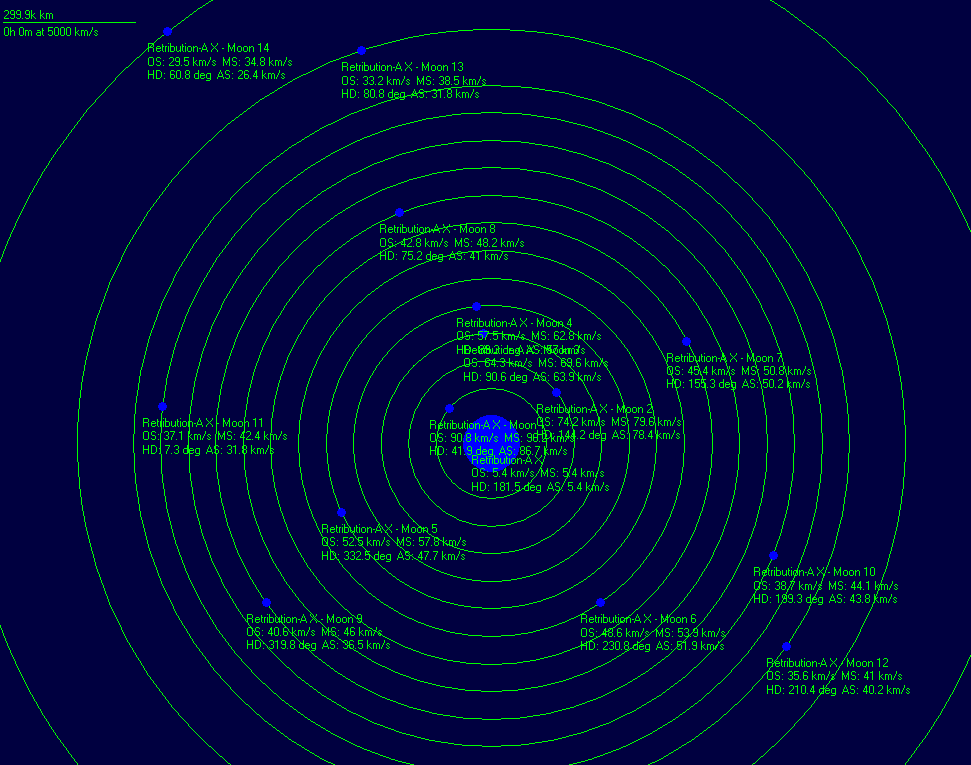Another quick update:
When you leave planetary orbit (or if you launch missiles), your ships (missiles) will have the same momentum as the planet or moon from which they are departing. If their destination lies in the opposite direction they will have to overcome that starting momentum first. To aid in decision making, you can optionally display information about each system body on the system map. The four values are:
OS: Orbital Speed. This is the speed at which a body moves along its orbit, relative to its parent body, and this value will never change during the game.
MS: Maximum Speed. This is the maximum speed a body will move through space, based on its own orbital speed plus the combined speeds of its hierachy of parent bodies. For example, if a moon moving at 30 km/s is orbiting a planet moving at 10 km/s, which in turn is orbiting a star that is moving at 6 km/s, at one point in its orbit the moon will be moving through space (relative to the system primary) at 46 km/s. The maximum possible speed of the body will remain constant during the game
HD: Heading. The current heading of the system body relative to the system primary. If this is a planet orbiting the primary, its heading will always be equal to its bearing from the star + 90 degrees. However, a moon orbiting that planet will have a heading that combines the vectors of its own movement and that of the parent body. The heading will change as a planet or moon orbits.
AS: Actual Speed. The actual speed of the body through space on its current heading, relative to the system primary. For a planet orbiting the primary, this will not change. For a moon orbiting that planet, its speed will increase as its moves in the same general direction as the planet and then decrease as its moves in the opposite direction. For a moon orbiting a planet, orbiting a star that is orbiting another star, the actual speed will vary considerably during the game.
These factors are affected by whether orbital movement in general is turned on and also if asteroid orbital movement is turned on. Even if asteroid orbital movement is turned off and the orbital speed of an asteroid is therefore zero, an asteroid may have a non-zero max speed if orbiting a non-primary star. In that case, heading will change during the game and potentially actual speed as well (if the parent star is orbiting a second star that is in turn orbiting the primary.
Below is a screenshot of the inner moons of a gas giant. The gas giant is orbiting the primary star and is currently on a heading of 181 at an orbital speed of 5.4 km/s. Those moons on the left are moving in the opposite direction to their parent so their actual speeds are lower than their orbital speeds. Moons on the right are overtaking their parent as therefore have actual speeds greater than their orbital speeds. The current heading and actual speeds of system bodies could have significant impacts on play, especially in multiple-star systems.

Steve